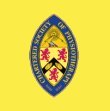Physiotherapy Rehabilitation
So what is rehab all about?
In fact, healing (inflammation and fibrosis) takes place whether you like it
or not, but the final outcome of an injury can be strongly influenced by what
you do during this process.
The final quality, strength and tolerance to loading and actual quantity can
vary by doing the correct type of rehab, or not!
 There is a fine balancing act to be done, and lies between a beneficial degree
of loading, but without causing any further damage. Gradual increments in
loading, especially eccentric loading, helps the adaptive process and
strengthening of the damaged tissues, whilst over-loading can cause a further
tear or re-rupture of the healing tissue causing more fibrous tissue to be
manufactured. This can lead to an excess of fibrous tissue to the requirements
for optimal healing.
There is a fine balancing act to be done, and lies between a beneficial degree
of loading, but without causing any further damage. Gradual increments in
loading, especially eccentric loading, helps the adaptive process and
strengthening of the damaged tissues, whilst over-loading can cause a further
tear or re-rupture of the healing tissue causing more fibrous tissue to be
manufactured. This can lead to an excess of fibrous tissue to the requirements
for optimal healing.
Eventually this excess scar tissue will consolidate or contract into a hard,
inflexible lump and this is not the best scenario for optimal recovery from a
soft tissue injury.
So a graduated programme of exposure to strain is necessary. This allows for
adequate time for remodelling and consolidation as a response to strain.
Ligaments don't have the property of contraction or elongation, and functionally
attach bone to bone, across a joint and act as a stabiliser of the joint.
Muscles on the other hand do have the capacity to contract or relax. They can
shorten to create movements or they act to stabilise the joint in addition to
the ligaments.
 Movements occur when muscles shorten bringing the ends closer together. This
type of contraction is concentric. But as well as contracting to shorten, a
muscle can also contract and expend energy in paying-out or lengthening. This
is called eccentric contraction.
Movements occur when muscles shorten bringing the ends closer together. This
type of contraction is concentric. But as well as contracting to shorten, a
muscle can also contract and expend energy in paying-out or lengthening. This
is called eccentric contraction.
For example, if we consider the biceps muscle
on the front of the upper arm, if this contracts, then the elbow bends the hand
moving towards the shoulder. If the biceps were to suddenly relax, the hand
would rapidly drop to the side as gravity would be pulling it back down.
However, if the hand was lowered slowly to the side with control of the speed,
then this would demonstrate an eccentric contraction, slowing down the
straightening of the elbow due to gravity.
It has been demonstrated that for many injuries, eccentric loading gives the
best stimulus for healing, possibly due to the fact that neural control,
mechanics and possibly due to the fact eccentric work is controlling the effect
of gravity, and as such there is no force peak associated with overcoming the
inertia which is more apparent when moving against gravity, compared to moving
with it.
The strain is not just put through the muscle, but through the 'muscle-tendon'
unit (muscles don't attach to bone directly, but through the intermediary
structure of a tendon). Eccentric loading produces a much more consistent
force through out the range of movement.
Just as training the strength of a muscle group is specific to the direction,
range and speed of loading, so is the rehabilitation phase. In fact principles
of rehabilitation are very similar where by training programmes have a period
of intense activity or over-strain, followed by a period of recovery during
which the response to training takes place. This response is the adaptive
process, and is when the muscle tendon complex strengthens in response to the
strain.
 It has been shown that chemical (protein) changes occur within a muscle fibre
after doing just one set of a weights activity, i.e. eight to ten reps at 80%
of max single lift. But it can take six to eight weeks before there are any
visible changes in the makeup of the muscle fibre cell. So, from this we can
reasonably assume that tissues have a chemical response to almost anything we
do over a certain level of effort, and probably means that we are in a continual
process of adaptation.
It has been shown that chemical (protein) changes occur within a muscle fibre
after doing just one set of a weights activity, i.e. eight to ten reps at 80%
of max single lift. But it can take six to eight weeks before there are any
visible changes in the makeup of the muscle fibre cell. So, from this we can
reasonably assume that tissues have a chemical response to almost anything we
do over a certain level of effort, and probably means that we are in a continual
process of adaptation.
Therefore we need to make sure that we are doing the correct patterns of
movement, rates of loading or unloading, and ranges of movement in all our
activities and not just as a part of an exercise programme.
This brings us to another very important part of the rehabilitation process
to correct or modify what some people call style, form or sound technique.
Rest and Rabbits
Resting an injury, apart from the first two to three days of the acute stage,
is not very productive in the long term. However relative rest or a modified
level of activity is. This has been borne out by many pieces of research, but
the most memorable one is an experiment on rabbits.
 A large group of rabbits (about 40) had one of their knee ligaments ruptured,
a significant injury. Half the group had their injured legs put into a kind of
splint, whilst the other half of the group were just left to hop around without
any form of support or immobilisation. At first neither group of rabbits hopped
around very much, but as the acute stages of pain settled, they began to move
around their cages.
A large group of rabbits (about 40) had one of their knee ligaments ruptured,
a significant injury. Half the group had their injured legs put into a kind of
splint, whilst the other half of the group were just left to hop around without
any form of support or immobilisation. At first neither group of rabbits hopped
around very much, but as the acute stages of pain settled, they began to move
around their cages.
After eight weeks, all the splints were taken off, and both groups allowed
to continue to hop around their cages as they wanted.
Six months after the initial injury and eighteen weeks after the splints were
removed from the knees of one half of the group, the knee ligaments were cut
out and tested to destruction on a strain gauge. The tensile strength was found
to be highest in the group that had not been constrained within a splint, but
had been able to gradually increase the degree and amount of loading as and
when the healing of the ligament progressed.
 And this despite the fact that a subsequent eighteen weeks passed in which
the two groups were able to have exactly the same amount of activity! This tells
us that graduated increments in loading in the first few weeks are far more
important and can be seen as irreplaceable, compared to those in the final
few weeks of rehabilitation.
And this despite the fact that a subsequent eighteen weeks passed in which
the two groups were able to have exactly the same amount of activity! This tells
us that graduated increments in loading in the first few weeks are far more
important and can be seen as irreplaceable, compared to those in the final
few weeks of rehabilitation.
This means that what you do in the early stages is vitally important to the
final outcome in strength. Not only this, but the alignment of fibres of the
new scar tissue was better and more akin to the original tissue before injury,
with the early incremental strain, indicating a better quality of tissue.
So this is what we want to get out of our rehabilitation, an early exposure
to incremental strain and stresses. This can be facilitated by the expertise
of a physiotherapist or sports rehabilitator, by controlling and managing the
initial acute stage of injury consisting of inflammation, pain and swelling,
all of which lead to loss of function. By steering you through these early
stages we hope to expose you to the optimal degree of stimulus for optimal
tissue repair, with going over the top and causing re-injury.
Our knowledge base of the anatomy, function and physiology of repair processes
in various tissues and our expertise in delivering custom rehabilitation
packages from the very early stages to intermediate and advanced, for each
individual enables us to achieve the most rapid and the strongest type of
repair.
Sports Science
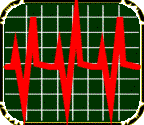 Here at Sport-Med we can offer detailed fitness assessment and physiological
profiling, and prescribe subsequent training programs based on cycles of training
and performance.
Here at Sport-Med we can offer detailed fitness assessment and physiological
profiling, and prescribe subsequent training programs based on cycles of training
and performance.
We can also offer biomechanical and nutritional assessment and advice regarding
all types of sports and activities.
Contact Tim Deykin at Sport-Med for more information.
Podiatry
Introduction
Biomechanics is the study of physical laws that govern the way our body moves.
These may include the force or speed of loading of the lower limbs in various
stages of the walking or running action. A good deal of consideration is
given to the alignment of the joints of the foot and ankle, knee and hip, and how
these may affect the way strain is put through the lower extremities.
What is a Podiatrist?
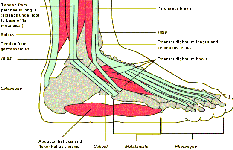 Podiatrists are particularly interested in the relationship between
bio-mechanical aspects of the foot, and painful conditions which may develop
within the foot itself or in other areas of the lower limbs or even in the
lower back.
Podiatrists are particularly interested in the relationship between
bio-mechanical aspects of the foot, and painful conditions which may develop
within the foot itself or in other areas of the lower limbs or even in the
lower back.
Many of the symptoms experienced in the feet or lower limbs, may
be manifestations of mechanical dysfunction or of particular illnesses which
may require medical or other specialist attention. You can be re-assured that
your podiatrist is well trained to recognise the symptoms of these illnesses
and is able to differentiate which conditions will respond to podiatry.
Abnormality of weight bearing function may therefore expose us to the
development of a wide range of painful conditions, such as:
» Lower back pain
» Hip pain
» Knee pain
» Arch pain
» Bunions
» Corns and Calluses
» Poor posture
» Poor balance
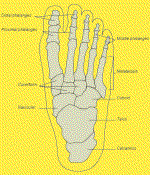 Indeed, many sports activities place much greater forces through the
lower limb. This is due to the process of running faster when there is
increased rate of loading of the foot, when you are pushing off the ball of
your foot or landing harder at heel strike, using different surfaces or types
of shoe and twisting or turning on different surfaces.
Indeed, many sports activities place much greater forces through the
lower limb. This is due to the process of running faster when there is
increased rate of loading of the foot, when you are pushing off the ball of
your foot or landing harder at heel strike, using different surfaces or types
of shoe and twisting or turning on different surfaces.
Each one of these will have the effect of magnifying even quite small
abnormalities. When combined with a heavy training schedule of some athlete's,
these strains can become too much for certain structures of the leg or foot,
and your body lets you know this by giving you pain and inflammation.
We all have our own individual style of running (and walking for that matter).
It is the result of a combination of the following:
» the structure and architecture of our bones and joints,
» the strength and flexibility of our muscles, tendons and ligaments,
» the actions of different groups of muscles;
» to afford us stable postural alignment
» to provide us with the ability to move very quickly
» to move powerfully against a resistance.
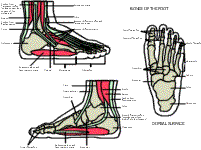 Podiatrists are highly trained to recognise and assess biomechanical
abnormalities in the foot and lower limb. The techniques used to help in
the evaluation include measurement of movement and muscle function as well
as careful, critical observation of walking or running patterns, often using
video analysis.
Podiatrists are highly trained to recognise and assess biomechanical
abnormalities in the foot and lower limb. The techniques used to help in
the evaluation include measurement of movement and muscle function as well
as careful, critical observation of walking or running patterns, often using
video analysis.
Full biomechanical assessment enables the podiatrist to treat the cause of
the problem, not just the symptoms of pain or swelling or stiffness, although
these are usually treated at the same time in conjunction with the
physiotherapist or sports rehabilitator. This is achieved using individually
prescribed orthotics, which fit inside your normal shoes, to correct and
improve the biomechanical function of the foot and lower limb.
Conditions that will benefit from Podiatry:
Bunions, Hallux valgus, Hallux limitus, Hallux rigidus, Plantar fasciitis,
calcaneal spurs, Achilles tendon enthsopathy, Shin splints, posterior tibial
tendinitis, stress fractures, Achilles tendinosis, Achilles paratendinosis,
Achilles partial rupture, posterior compartment syndrome, anterior compartment syndrome,
recurrent calf muscle pulls and tears, Recurrent ankle sprains/instability,
Anterior knee pain, patella tendinosis, jumpers knee, Quadriceps tendinitis,
Chondro-malacia patella, Ilio-tibial band friction syndrome, Trochanteric bursitis
Hip pain, Groin pain, Buttock pain, Lower back pain, Neurological lesions,
Dropped foot, Neurological conditions, Diabetics foot problems, Rheumatoid foot problems.
Initial Consultation or Assessment
 The assessment usually takes about forty minutes. It begins with taking details
of the symptoms you are currently experiencing, and the events leading up to
the onset of the problem, as well as details of any treatment that you have
received to date. We may also ask a few other questions that you might not
think are pertinent, but which help us to eliminate the possibility of your
problem being a medical condition and not one that will respond to podiatry
management alone.
The assessment usually takes about forty minutes. It begins with taking details
of the symptoms you are currently experiencing, and the events leading up to
the onset of the problem, as well as details of any treatment that you have
received to date. We may also ask a few other questions that you might not
think are pertinent, but which help us to eliminate the possibility of your
problem being a medical condition and not one that will respond to podiatry
management alone.
Following this a physical examination is undertaken. You will have been asked
to bring a pair of shorts to change into so that the podiatrist can more
easily observe your lower limbs.
The examination deals with different aspects of foot and limb function,
beginning with general postural assessment in standing, and then functional
assessment with very simple tasks like bending your knees whilst standing,
and repeating this on each leg on its own. This can tell us whether there are
any underlying postural weaknesses for which strengthening exercises can be
prescribed. Sometimes muscles are too short or too tight and prevent normal
alignment of the joints of the lower limbs. These will benefit from a specific
programme of stretching exercises.
Medico-Legal
We accept referrals from Solicitors and Referral Agencies. This is done on
the basis that the patient attends an initial consultation at our standard
cost of £39.00, which will have to be paid for at the time of the consultation.
For this the patient will be assessed and some treatment and / or advice
regarding strategy for self-management for the short-term will be given.
An evaluation report is prepared for patients we assess and this
is sent to the patients Doctor as a professional courtesy. A copy of this
report is sent to the solicitor or referral agency along with a brief letter
recommending physiotherapy treatment and how many treatment sessions. We try
to limit this to six sessions initially, unless there is more than one area of
injury. It will contain no other details.
We ask that the solicitor or referral agency seek an interim payment.
Only when this has been secured by Sport-Med will a course of treatment
commence.
If a progress or discharge report is required, summarising treatment and
outcome, or recommending referral to a specialist, then a further
re-evaluation fee is charged at £45.00.
Referral Agencies who operate direct billing and payment schemes will be
charged at the normal rate if each treatment is paid on receipt of invoice.
If payment is not made until the conclusion of the treatment then a premium
rate is charged of £42.00 for each treatment session.
Medico-Legal cases charging structure
If a course of treatment is authorised and we receive payment for the course
of treatment prior to commencing the treatment, then the following price
structure applies:
» Consultation - £ 39.00
» Treatment sessions - £ 34.00
However, if the patient commences the course of treatment whilst an interim
payment is being sought, then a premium rate is charged as follows:
» Consultation - £ 47.00
» Treatment sessions - £ 42.00
» Follow-up report at end of course of treatment - £ 45.00
» Full medical/physiotherapy report - £200.00
» Full medical/physiotherapy report - £200.00
Day rates to attend court as an expert witness or witness of fact are £550.00
If the case is cancelled at short notice, settled out of court or rescheduled
within 72 hours of the hearing, then a late cancellation fee of £300.00 is
still payable and will be charged to the solicitors.
If you require any further information then please do not hesitate to
contact us.
Information for GP's and Consultants
We are happy to receive referrals of patients from General Practitioners and
Consultants. We do appreciate a brief referral letter, but know how we are all
pushed for time, so a phone call or fax is sufficient.
You can ask the patient to contact us directly, or if you provide a day and
evening telephone number we are happy to contact the patient ourselves.
As with any patient who receives an assessment, we will write a brief GP
Evaluation Report summarising our findings and prognosis, along with any
recommendations for further investigation or referral to a specialist. In such
a case we will often suggest a particular consultant we think the patient
should see, and whether this is to be through the NHS or on a Private basis,
if the patient has medical cover or has the resources to fund it the referral.
A Consultant of patients referred to Sport-Med will receive acknowledgement
of the referral and our proposed course of physiotherapy treatment. Upon
discharge, or if the patient is to return for a review, a further Progress
Report is prepared to update you on the patients condition and response to
physiotherapy.
We will be happy to consider undertaking any programme of treatment that you
may suggest or recommend.
The areas of expertise within the clinic cover the full spectrum of neuro-
musculo-skeletal rehabilitation, as we have a physiotherapist, podiatrist and
sports rehabilitator professionals.
We have the obvious interests and expertise in sports injuries, but in addition
we also have considerable experience and expertise in the management and
treatment of back and neck problems resulting in nerve root sensitisation,
referred pain, neurological deficit.
Our approach includes the bio-psychosocial factors, where we aim to help the
patient to understand their pain and not to maintain negative attitudes/beliefs.
We feel a certain degree of explanation is helpful in this regard, but we try
to demonstrate clinical signs by which they can judge their recovery other
than using pain as a yardstick.
We will often make recommendations on prescription of medication based on
current thinking in pain management, such as:
» appropriate pain killers,
» anti-inflammatories,
» pain modulators,
» muscle relaxants.
Occasionally we will suggest medication to help with disturbed sleep patterns.
We have other related areas of expertise;
» Cervico-genic headaches
» Tempero-mandibular joint dysfunction
» Associated TMJ symptoms
» Lower limb biomechanics
» Specialist running injuries
» Achilles tendinitis (tendinosis)
» Patellar tendinitis (tendinosis)
» Patello-femoral mal-tracking
» Tennis/golfer elbow (enthesiopathies)
» Groin/abdominal strains
» Direct/indirect Herniae
» Overuse/overstrain injuries
» Shoulder impingements
» Workstation ergonomics
» Manual Handling/Lifting
Top»
|


